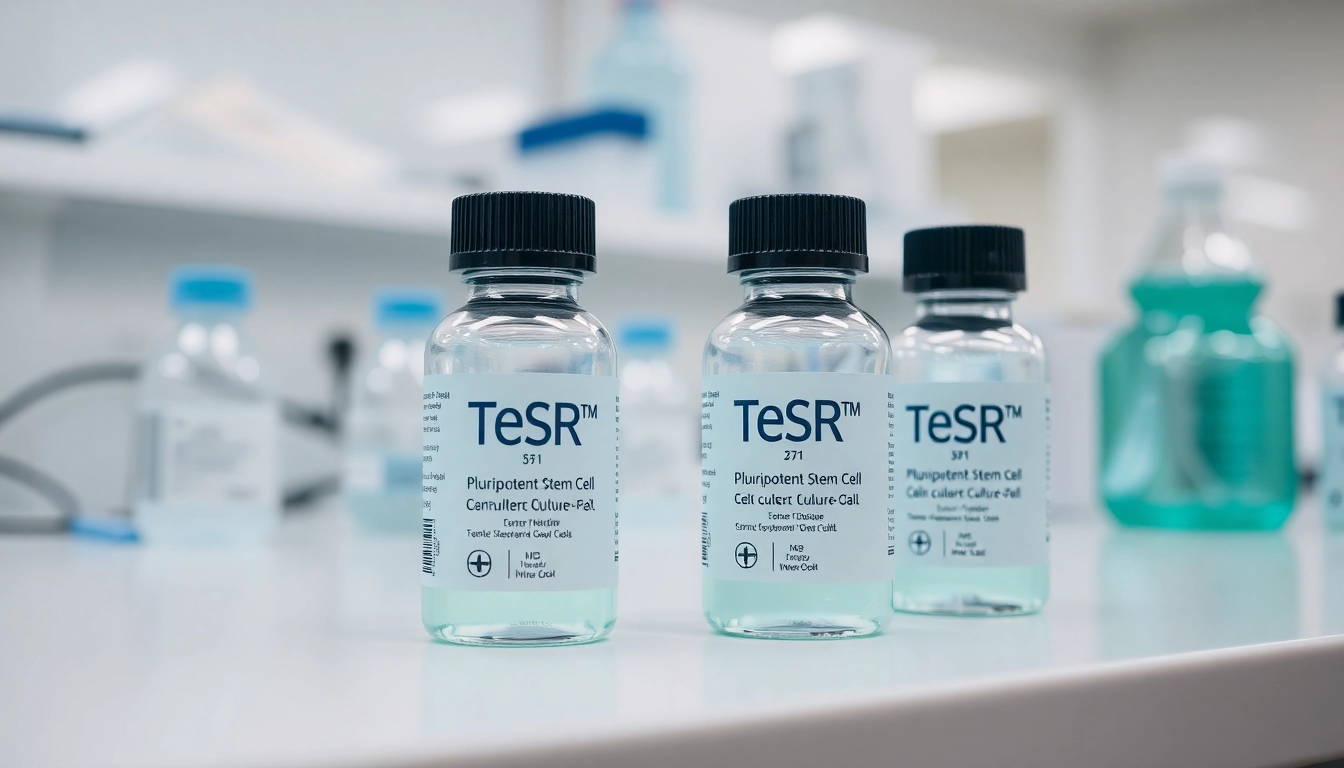Understanding TeSR™ Media for Pluripotent Stem Cells
The advancement of pluripotent stem cell culture has been a game-changer in biomedical research. Among the various products available, TeSR™ media stands out as a leading solution for maintaining and differentiating human pluripotent stem cells (hPSCs). This comprehensive guide delves deeply into what TeSR™ media offers, why it’s crucial in modern stem cell research, and how it is applied within the scientific community. All check media from TeSR™ is designed specifically to support the complex needs of researchers working with hPSCs.
What is TeSR™ Media?
TeSR™ media is a family of feeder-free culture systems formulated to support the growth and maintenance of human embryonic stem (ES) cells and induced pluripotent stem (iPS) cells. Created by the lab of Dr. James Thomson at the University of Wisconsin, TeSR™ media facilitates a defined, controlled environment that minimizes contamination risks often associated with traditional feeder-based cultures. The variety of media types, including mTeSR™1, mTeSR™ Plus, and TeSR™-E8™, are tailored to accommodate various applications from maintenance to differentiation and reprogramming.
The Importance of Feeder-Free Culture Systems
Feeder-free culture systems allow researchers to avoid several complications associated with feeder layers, such as variability in cell growth, contamination, and ethical issues pertaining to animal-derived products. TeSR™ media enables the culture of hPSCs in a chemically defined manner, promoting consistency, reliability, and reproducibility across experimental conditions. This advancement is particularly significant given the rapid pace of stem cell research, where quality and reproducibility are paramount.
Overview of TeSR™ Product Lineup
The TeSR™ product lineup comprises multiple formulations, each serving unique roles within the pluripotent stem cell research workflow. Key products include:
- mTeSR™1: A widely used feeder-free medium for hPSC maintenance.
- mTeSR™ Plus: An advanced version that offers superior buffering capacity and stabilized components.
- TeSR™-E8™: A simplified low-protein maintenance medium ideal for long-term hPSC culture.
- TeSR™-AOF: Animal Origin-Free medium ensuring enhanced safety from contaminants.
- ReproTeSR™: Optimized for reprogramming somatic cells back to pluripotency.
Key Formulations and Their Applications
Comparing mTeSR™ Plus and Other Maintenance Media
mTeSR™ Plus stands distinct in its formulation compared to other maintenance media due to its enhanced capacity for buffering, reduction in medium acidification, and significant stability. In situations where researchers must delay routine media changes, this proprietary formulation ensures the maintenance of cell quality and promotes better survival rates in cultured cells. Unlike traditional media, mTeSR™ Plus is specifically designed for use in extended culture periods, which proves beneficial during weekends or holiday breaks in laboratory settings.
Applications of TeSR™ in iPS Cell Reprogramming
The process of generating iPS cells involves reprogramming somatic cells back to a pluripotent state. TeSR™ media provide an optimal environment for successful reprogramming by supporting the needed signaling pathways and cellular integrity during this critical transition. For instance, the ReproTeSR™ medium is tailored to enhance the efficiency of fibroblast reprogramming into iPS cells, offering a systematic approach to achieving higher yields of pluripotent stem cells.
Differentiation Media: Choosing the Right Product
When it comes to differentiating hPSCs into specific cell types, various TeSR™ media products, such as TeSR™-E5 and TeSR™-E6, are available. Each medium is formulated to address distinct cellular transitioning needs, ensuring that researchers can reliably guide cells into desired lineages, such as neural, cardiac, or pancreatic cells. The choice of differentiation media can significantly influence the outcome, emphasizing the importance of selecting the appropriate formulation based on the target cell type and desired functional outcomes.
Enhancing Research with TeSR™ Platforms
Understanding the Role of Cytokines in PSC Culture
Cytokines play crucial roles in stem cell maintenance and differentiation by mediating signaling pathways that govern cellular functions. Within TeSR™ media, specific cytokines are included to enhance proliferation and maintain pluripotency. Understanding the functions of these cytokines helps researchers optimize their protocols, ensuring consistent results during culture processes. Additionally, the role of cytokines extends beyond just maintenance; they are integral to the biodiversity of culture environments, supporting the differentiation potential when needed.
Leveraging TeSR™ for Cryopreservation of Stem Cells
Preserving hPSCs through cryopreservation is critical for long-term storage and later use in experiments. TeSR™ provides formulated solutions such as mFreSR™ and FreSR™-S specifically designed for cell preservation. These formulations are imbued with optimal cryoprotective agents that protect against cellular damage during freezing and thawing processes. Implementing these solutions allows researchers to maintain a reliable availability of high-quality hPSCs for future studies.
Best Practices for Maintaining Cell Integrity
Maintaining the integrity of hPSC cultures goes beyond simply using the right media; it requires comprehensive attention to various factors including environmental conditions, media change protocols, and routine assessments of cell health. Best practices involve monitoring cell morphology, assessing biliary markers, and ensuring genomic integrity through techniques such as karyotyping and whole-genome sequencing. These measures help mitigate risks associated with genetic drift and loss of pluripotency during extended culture periods.
Consulting Experts: Insights from Leading Researchers
Interviews with Key Opinion Leaders in Stem Cell Research
To gain a deeper understanding of the practical applications of TeSR™ media, insights from leading researchers such as Dr. Joseph C. Wu, who specializes in differentiating cells into hematopoietic lineages, and Dr. Christine Mummery, known for cardiovascular differentiation studies, can be invaluable. Their experiences highlight both the success stories and challenges encountered in the field, particularly in leveraging TeSR™ media for cutting-edge research.
Case Studies: Successful Outcomes Using TeSR™
Several case studies illustrate the diverse applications of TeSR™ media. For example, researchers have effectively used mTeSR™1 to develop stable cardiac cell lines for drug screening. Likewise, the use of TeSR™-E8 in maintaining undifferentiated hPSCs has led to regenerative medicine advancements, showcasing the media’s ability to produce high-quality yield in pluripotent cell lines critical for therapy. These cases underline the versatility and efficacy of TeSR™ products in advancing pluripotent stem cell research.
Operational Challenges in hPSC Cultures
While TeSR™ media has robust formulations, challenges in hPSC culture still exist, including batch variability of media components, cell line-specific requirements, and the need for strict aseptic techniques. Addressing these challenges involves continuous testing and quality control, including maintaining strict environmental control and adherence to standardized protocols. By engaging the community through forums and collaborations, researchers can better overcome these operational hurdles and improve outcomes.
Future Directions and Innovations in Stem Cell Media
Emerging Trends in Pluripotent Stem Cell Research
As the field of stem cell research continues to evolve, new trends are emerging that may benefit from innovations in media formulations. For instance, advancements in 3D cell culture using TeSR™-3D media show potential for providing a more physiological environment for hPSCs. This shift from traditional 2D cultures to 3D systems facilitates better mimicking of tissue architecture and cellular interactions, paving the way for more robust research outcomes.
Regulatory Compliance and Manufacturing Practices
Ensuring regulatory compliance in the production of TeSR™ media is essential, especially as the transition from research to clinical applications accelerates. Manufactured under cGMP conditions, TeSR™ products adhere to stringent quality control processes that ensure safety and efficacy. Continuous investment in improving manufacturing practices will be key to supporting future scalability in clinical settings.
Community Engagement and Scientific Resources
The growth of the TeSR™ product family is supported by an active community of researchers who regularly share insights, data, and experiences through webinars, publications, and collaborative studies. Engaging with this community encourages knowledge sharing and cultivates advancements in pluripotent stem cell technology, solidifying the significance of TeSR™ media in the next generation of biomedical research.



